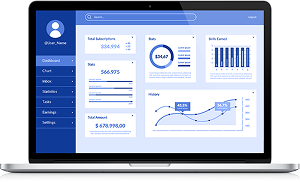Does your core IT team spend 70% of its time just keeping your business applications running? Undoubtedly, keeping your app alive is crucial, yet spending such an amount of effort just for that, instead of spending more time on growth-driving activities, is not sensible. Not to mention, in countries like Singapore, where tech talent costs are expensive, finding enough developers for your project is already an itching problem. That’s why many businesses are turning to Application Management Services (AMS), a more efficient option than keeping a larger internal team. So, what is AMS? How reliably does this service work? Why does it deliver measurable ROI for your business? How is AI changing app management? If you have those questions, this guide is made for you.
5 Must-Adapt IT Operations Trend Before 2030
This ebook provides a clear, executive-level perspective on 5 forces redefining IT operations in the next 5 years. The strategic decisions leaders must act now to stay ahead.
Download for Free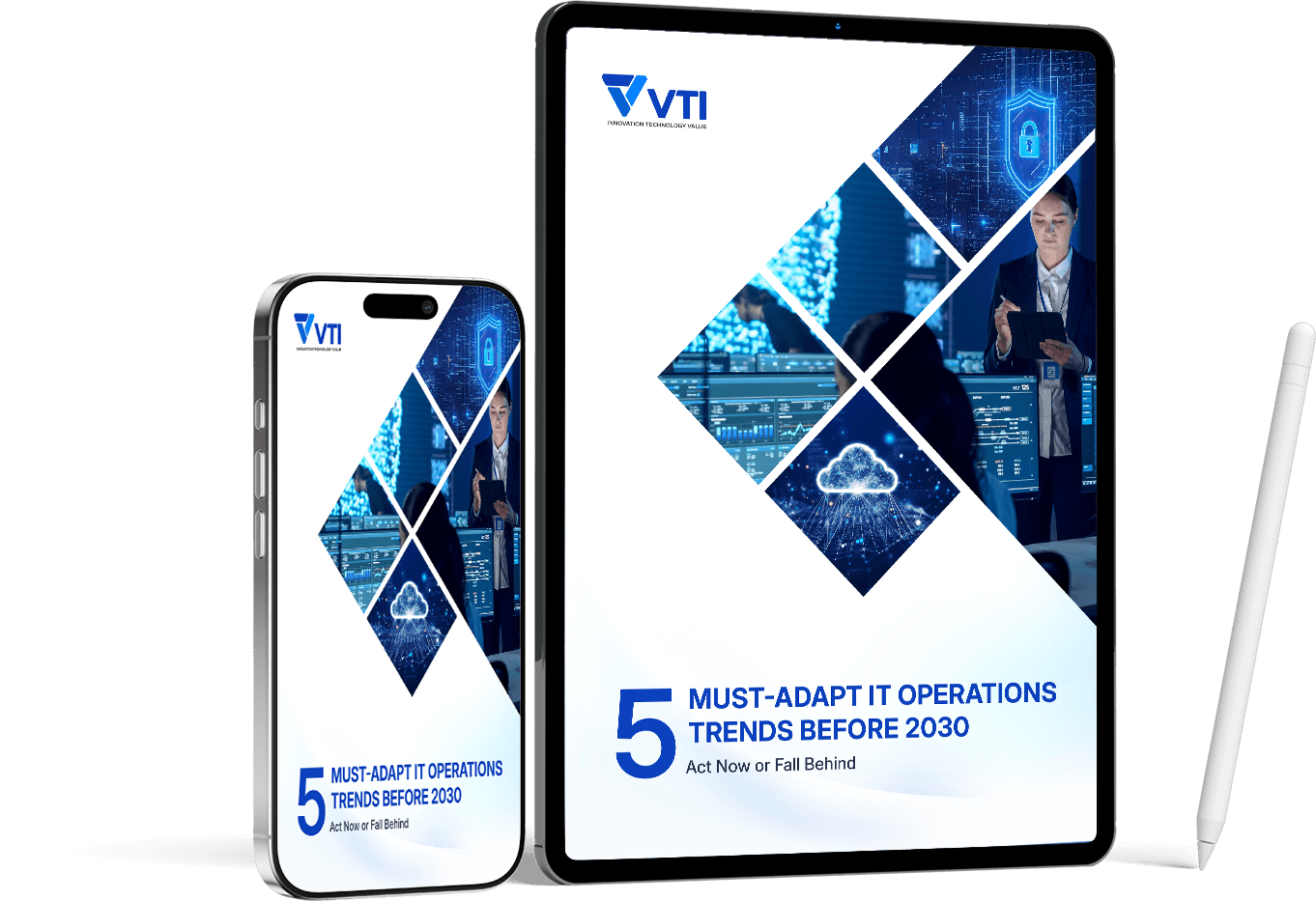
Note: The acronym AMS means different things in industries, for example:
- Association Management Software helps nonprofits manage members.
- Asset Management Systems track company resources.
- In hospitals, AMS means Acute Mountain Sickness.
This guide focuses on Application Managed Services, a part of Managed Services. So if you want to search for “what is AMS in IT?” or “What is application managed services?”. You’re in the right place.
What is AMS?
The acronym AMS has multiple meanings across different business and technology contexts; however, in IT, it is often known as an abbreviation for Application Managed Services, or Application Management Services. So, what is AMS actually?
Simply, it means outsourcing your application operation to specialized providers. They will handle your IT system end-to-end, from monitoring, maintenance, troubleshooting, to improvements. Your internal IT team can stop firefighting daily issues and operations; instead, focus on projects that actually grow your business.
Who Should Consider Application Managed Services?
It depends. But you can consider either your business nature or current performance to decide.
By Business Type & Operational Demands
To be honest, AMS isn’t equally valuable across all industries and businesses. This service will be most valuable when you demand 24/7 uptime, handle sensitive data, or experience traffic spikes. Below are some references for you.
Strong AMS candidates:
- Large enterprises: In general, application portfolios in large organizations are increasingly complex, resulting in costly efforts to maintain and operate them. Managing dozens of interconnected systems (ERP, CRM,…) overwhelms internal teams. Enterprises commonly spend two-thirds or more of their IT budgets on ongoing operations and maintenance. AMS can reduce the cost.
- Retail & eCommerce companies: Seasonal spikes require seamless scaling. Black Friday downtime means direct revenue loss. AMS prevents crashes during peak periods.
- Healthcare organizations: Patient care systems need 24/7 uptime. Strict regulations like PDPA require specialized compliance expertise that AMS providers maintain continuously.
- Financial services: High transaction volumes demand security and reliability. Regulatory compliance across multiple jurisdictions (MAS in Singapore, for example) requires dedicated expertise.
- Rapidly growing startups: When user numbers double yearly, applications need constant optimization. Internal teams can’t keep pace with scaling demands.
Poor AMS fit:
- Early-stage startups with minimal application complexity or low transaction volumes find AMS cost-ineffective.
- Small businesses with limited digital operations can handle applications internally without external support.
- Organizations where applications involve minimal user interactions or don’t require high availability.
By Current IT Performance
It is also essential to assess the situation from an internal capability, whether or not your current team can handle the system.
You need AMS if:
- Your IT team spends over 60% of its time on maintenance. It is recommended to keep this below 40%.
- You lack specialized expertise for critical systems (SAP, Salesforce, Oracle). Hiring certified specialists is time-consuming, expensive, and difficult.
- You experience frequent downtime or performance issues that impact customers directly.
You don’t need AMS if:
- Your applications run smoothly with the current internal resources. Performance meets business needs consistently.
- You operate static systems that rarely change. Applications with predictable behavior don’t benefit from advanced monitoring.
- Choosing AMS without a clear strategic need. The service delivers value only when high availability, performance, security, and scalability are critical business requirements.
What is AMS’s Core Component?
So you need AMS, I believe, but let’s be more specific. In AMS, there are three essential service components as below; let’s see which one is what you’re looking for.
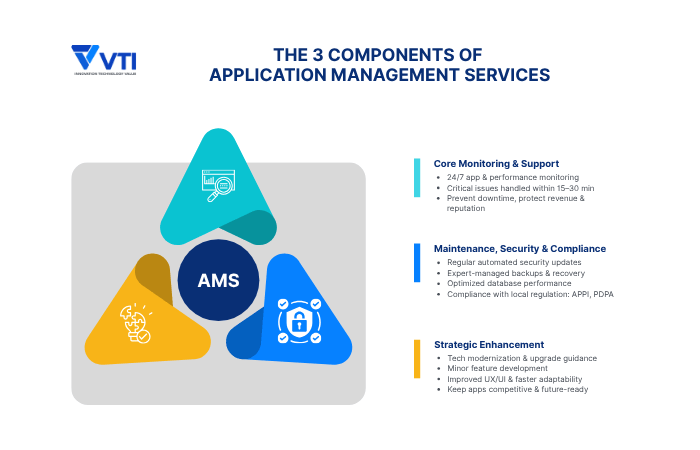
Component 1: Core Monitoring & Support (Foundation Service)
Your AMS provider will watch your applications continuously and check performance & system health every minute. Therefore, whenever problems occur, you get immediate support.
Based on your Service Level Agreements, critical issues could be addressed within 15-30 minutes, not hours or days. Fast enough that most issues are resolved before your users notice anything wrong.
We all understand that every minute of downtime costs money and customer trust. In other words, such fast problem resolution will protect your revenue and reputation.
Component 2: Maintenance, Security & Compliance (Protection Layer)
With the appearance of AMS providers, security updates happen automatically on a regular schedule. This minimizes the scrambling to patch vulnerabilities when threats emerge.
Secondly, your critical business data stays protected against loss scenarios, due to a team of always-there experts to handle backups and recovery planning. Database management keeps your data accessible and fast. Regular tuning prevents the slowdowns that frustrate users and hurt productivity.
Regarding regulation, in strict industries like Singapore, you’re free from the burden. The providers can ensure local rules are met, thanks to a standard procedure and experience in working with governments.
For example, competent AMS vendors in Singapore can help businesses comply with Smart Nation Cybersecurity requirements and align with IMDA’s Digital Trust initiatives.
To sum up, this part prevents the expensive problems that damage businesses, such as data breaches, compliance penalties, and system failures.
Component 3: Strategic Enhancement (Growth Enabler)
Modern AMS goes beyond maintenance to drive improvement. With a strong technical foundation, providers help you enhance applications strategically.
Your team gets advice on technology upgrades and modernization to make the managed applications faster over time or have a better UX/UI.
Minor feature development is often included. You can add small improvements without launching major projects.
This tier keeps your applications competitive. You adapt to changing business needs faster than competitors.
Finding a full-service AMS Provider?
VTI's Application Managed Services (AMS) offer an ITIL-compliant and AI-powered solution designed to ensure the optimal performance, stability, and continuous evolution of your business-critical applications.
Why Businesses Are Choosing AMS Over Traditional IT Support?
Traditional IT support has clear strengths that have served businesses well for years:
- Immediate accessibility – On-demand help from teams embedded within your organizational culture
- Simplicity for smaller operations – Cost-effective for less complex environments where extensive application management isn’t needed
- Direct control – Full oversight of IT operations and decision-making
However, these advantages come with significant trade-offs in today’s fast-paced business environment:
- Reactive rather than proactive – Traditional support often operates in “firefighting mode,” addressing issues only after they impact operations
- Limited specialization – Slower resolution times due to less specialized skills and a lack of advanced monitoring tools
- Tactical focus – Short-term problem-solving rather than strategic, long-term business alignment
While AMS does require committing to external providers and involves some loss of direct day-to-day control, businesses are increasingly finding these trade-offs acceptable – even preferable – because the business value delivered far outweighs these concerns.
The shift from traditional IT to AMS delivers measurable business advantages. Here’s what changes:
| What Matters | Traditional IT Support | Application Managed Services (AMS) |
| Cost Control | Unpredictable (Hourly emergency fees) | Predictable (Fixed monthly budget based on contract) |
| Risk Management | Reactive after problems occur | Proactive prevention before impact |
| Expertise Access | Limited to internal hires | Certified specialists across all technologies |
| Strategic Capacity | Team stuck on maintenance | Repeated tasks were transferred to the vendor. Internal team freed for innovation projects |
| Business Continuity | Business hours coverage | 24/7/365 global support |
| Compliance | Your team tracks regulations | Provider ensures continuous compliance |
What is AMS’s Benefit for Business?
Let’s dive deeper into the benefits that directly impact your bottom line and competitive position:
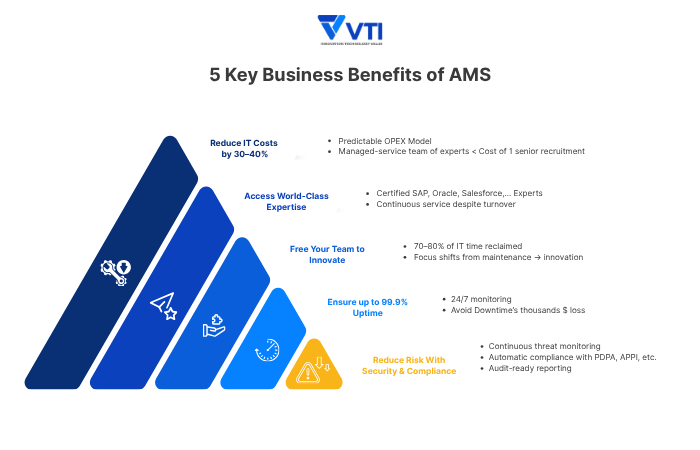
1. Reduce IT Costs by 30-40% With Predictable Budgets
Hiring specialized application experts is expensive. It costs $180,000-$220,000 SGD annually for senior SAP specialists in Singapore. Or Oracle DBAs command $150,000-$180,000 SGD in Singapore’s tight labor market.
Meanwhile, AMS gives you an entire expert team for less than one senior hire. You get specific specialists across all your applications.
The cost model shifts from capital expense (CAPEX) to operating expense (OPEX). This improves your financial flexibility and cash flow.
Budget planning becomes straightforward. No surprise costs from emergency fixes or unplanned outages.
Organizations typically see a 30-40% cost reduction thanks to managed service within the first year. The savings compound as your application portfolio grows.
Download Free MSP Cost Estimator Template
A simple, powerful template to calculate your managed service expense. Just input your design market, service scope, device count, and support levels, and instantly get your Cost Per Ticket and country-specific benchmark.
Get Free Template
2. Access World-Class Expertise Without Hiring Wars
Once again, your applications need specific skills. Salesforce, SAP, Oracle, and custom applications each require different expertise.
Finding and keeping such talent is nearly impossible. The market competition for specialized skills is intense in start-up heaven like Singapore.
AMS providers maintain teams with certified specialists. These experts stay current with the latest security threats and optimization techniques.
You get world-class expertise without recruitment costs or retention risks. When specialists leave the provider, your service continues uninterrupted.
3. Free Your Team to Drive Innovation and Growth
Another problem related to optimizing your organization’s human resources. Your IT team is stretched thin, maintaining existing systems, which takes up 70% to 80% time of IT professionals.
In other words, they do not have much capacity for strategic initiatives, which drives companies’ growth.
AMS takes over the maintenance burden completely. Your internal team finally focuses on projects that differentiate your business.
This shift accelerates innovation dramatically. Your organization moves faster on digital transformation and competitive initiatives.
Strategic focus improves employee satisfaction, too. Your best people work on interesting challenges, not routine maintenance.
4. Protect Revenue With 99.9% Uptime Guarantees
Downtime costs money. The most typical example can be found in Singapore’s e-commerce sector. Downtime can cost up to $15,000-50,000 per hour during peak shopping periods like 11.11.
And far beyond the immediate financial hit, there are intangible losses related to customer trust. Studies show that 29% of executives have lost customers due to downtime, and 44% claim that downtime damages their reputation.
This is what value application managed services is: 24/7 monitoring. Issues get detected and resolved before users experience problems.
This reliability protects your business reputation. Customers and employees depend on consistent system availability.
5. Reduce Risk With Proactive Security and Compliance
Security threats evolve daily. Keeping up with the latest risks requires constant attention and specialized knowledge.
AMS providers employ dedicated security specialists. They monitor threat intelligence and apply protections immediately across all your applications.
Compliance requirements keep changing. PDPA in Singapore requires ongoing documentation and controls.
Your provider ensures applications meet all regulatory standards. They handle audits, reporting, and evidence collection automatically.
How AI Makes Application Management More Reliable & Cost-Effective?
With the appearance of AI, AMS is becoming even more promising for enterprises. Here’s what this means for your business:
Catching Problems Before They Happen
Spotting warning signs buried in millions of system logs seems nearly impossible for human teams. But AI is built to monitor your applications constantly, learning what normal behavior looks like. When something unusual appears, maybe your database queries are taking 0.2 seconds longer than usual, AI flags it immediately.
With such detecting systems, your team gets 3-5 days’ advance to come up with a maintenance plan before any problem impacts customers. It is said to account for a 20-40% reduction in unplanned downtime.
No need for Manual Intervention Regarding Repeated Problems
Remember the last time your database slowed down at 2 AM? Someone had to wake up, log in, diagnose the issue, and apply a fix. It probably took two hours.
AI remembers every incident and solution. And they will be there, monitoring 24/7. When that same database issue occurs again, AI applies the fix instantly—no human needed.
This isn’t science fiction. Meta reduced their problem resolution time by 50% using AI. Issues that took hours now resolve in minutes.
Your IT team stops handling repetitive problems. They focus on the complex challenges that actually need human expertise. And unlike your human team, AI never sleeps or takes a vacation.
Smart Resource Management That Saves Money
No more need for human supervision for how you use the infrastructure. AI can handle them.
During peak traffic, the system automatically increases server capacity. When traffic drops, it scales back down. Your database runs faster because AI continuously tunes configurations, no manual optimization needed.
Companies using AI-powered management see 25% lower maintenance costs. You pay for exactly what you need and when you need it.
Selecting the Right AMS Provider: 5 Must-Evaluate Criteria
By now, you must have a clearer picture of “What is application management services?” and “How is it transformed in the AI era?”. It is time to find your right strategic AMS provider.
The five factors below will determine your success or failure.
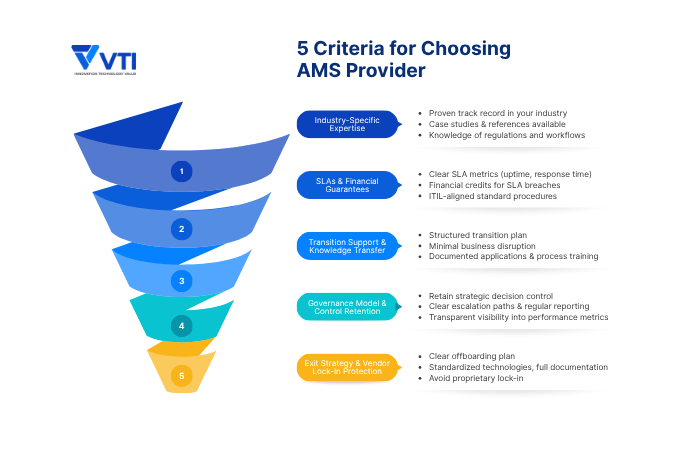
1. Industry-Specific Expertise and Track Record
Look for managed service providers with proven experience in your industry (retail, manufacturing, healthcare,…). Generic IT support providers lack the specialized knowledge you need.
Ask for case studies and client references from similar organizations. Verify their understanding of your regulatory requirements and business processes.
3. Service Level Agreements and Financial Guarantees
Review SLA terms carefully before signing. Understand exactly what uptime percentage they guarantee and what penalties apply for failures.
Look for providers who offer financial credits for SLA breaches. This shows they stand behind their commitments with real consequences.
And importantly, better to look for ones with standardized procedures, especially ITIL.
3. Transition Support and Knowledge Transfer
The transition period determines long-term success. Ask how they handle knowledge transfer from your internal team.
Strong providers offer detailed transition plans with minimal business disruption. They should document your applications thoroughly and train your team on the new processes.
4. Governance Model and Control Retention
Understand how much control you maintain over strategic decisions. You should retain governance while the provider handles execution.
Look for clear escalation paths and regular reporting. You need visibility into application performance and incident resolution without micromanaging daily operations.
5. Exit Strategy and Vendor Lock-In Protection
Plan for the future before signing contracts. Understand how you can transition away from the provider if needed.
Look for providers who use standard technologies and document everything thoroughly. Avoid proprietary tools that create lock-in and make switching providers expensive.
Extra: AI Leverage Capability
This is not a must, but a worth considering criterion for your decision-making. As we already know how AI enhances efficiency in application management. Therefore, if you can find a vendor with high AI/ML capabilities, including predictive monitoring and automated optimization, not just basic alerting, your success is increased significantly.
Finding a full-service AMS Provider?
VTI's Application Managed Services (AMS) offer an ITIL-compliant and AI-powered solution designed to ensure the optimal performance, stability, and continuous evolution of your business-critical applications.
People Also Ask
Who is Responsible for AMS Operations and Reporting?
The AMS provider handles daily operations and performance reporting. They track system health, incident resolution, and optimization activities. Your internal IT team maintains governance and strategic direction. The Application Owner reviews reports and sets business priorities.
This shared responsibility model works best. The provider executes while you maintain strategic control.
What is an AMS Strategy?
An AMS strategy defines your application management approach. It determines which applications to manage internally and which to outsource. The strategy includes Service Level Agreements defining response times and availability targets. It also specifies which service tier each application requires.
A good strategy aligns with business objectives. You prioritize critical applications and optimize resource allocation across your portfolio.
Regular reviews keep the strategy current. Business needs change, and your AMS approach should adapt quarterly.
How Do We Avoid Vendor Lock-In With AMS?
- Protect yourself with clear contract terms and standard technologies. Require detailed documentation of all configurations and customizations.
- Ensure the provider uses industry-standard tools and platforms. Avoid proprietary management systems that create switching costs.
- Include exit clauses in contracts with reasonable transition periods. The provider should support knowledge transfer back to your team or a new vendor.
- Maintain your own documentation and governance oversight. Never become completely dependent on the provider’s institutional knowledge.
Conclusion: Making AMS Your Strategic Advantage
Application Managed Services transforms how you handle business-critical systems. You get stability, expertise, and continuous improvement simultaneously.
The value extends far beyond cost savings. AMS frees your team to innovate while experts handle daily operations professionally.
In today’s competitive environment, application reliability is not optional. Your customers expect flawless digital experiences every single time.
The question is not whether to adopt AMS, but when and with whom. Delaying this decision means your competitors gain advantages while your team stays trapped in maintenance cycles.
AMS represents a strategic investment in business continuity and growth. It positions your organization to win in an increasingly digital marketplace.
Is your IT team spending 70% of their time on maintenance instead of innovation? Contact our experts for a complimentary AMS readiness assessment. We’ll show you exactly how much capacity you can unlock and what ROI to expect in your first year.
![[FREE EBOOK] Strategic Vietnam IT Outsourcing: Optimizing Cost and Workforce Efficiency](https://vti.com.vn/wp-content/uploads/2023/08/cover-mockup_ebook-it-outsourcing-20230331111004-ynxdn-1.png)
